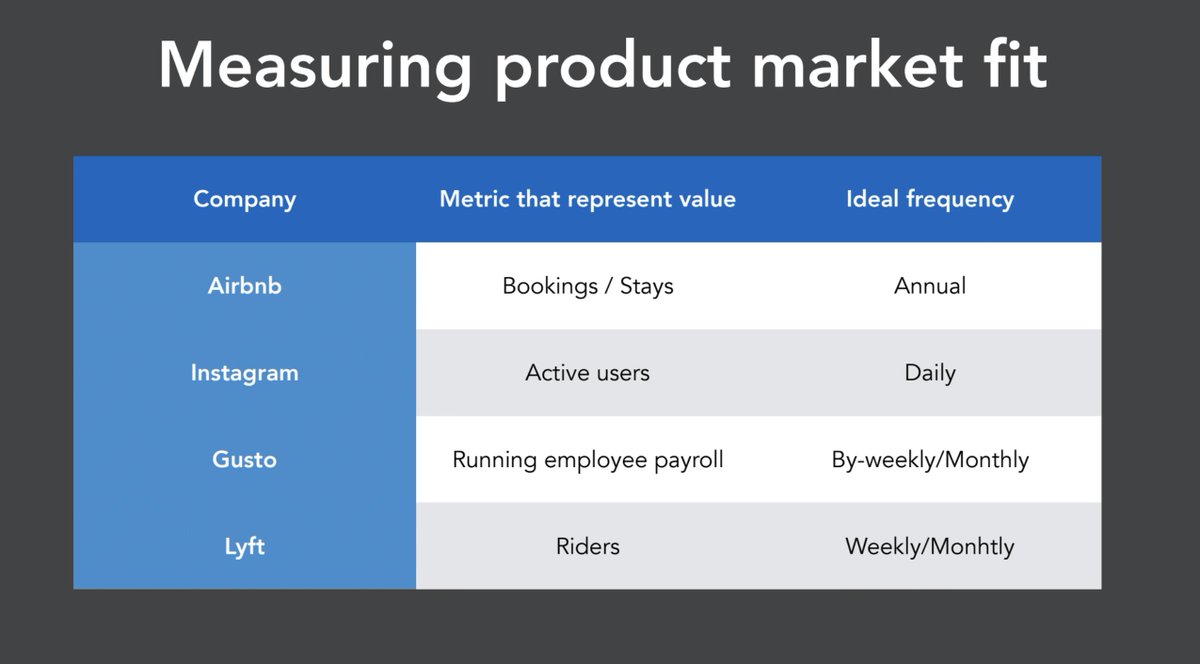1/ Thread:✍️New blog post - The best metric for determining quantitative product market fit
I think cohort retention rate is the most important product market fit metric, and I recommend using it along with other product market fit definitions
growthengblog.com/blog/the-best-…
I think cohort retention rate is the most important product market fit metric, and I recommend using it along with other product market fit definitions
growthengblog.com/blog/the-best-…
2/ A good product market fit metric:
-Will tell you when the product is good enough to work acquisition channels
-Minimizes false positives and false negatives
-Will tell you when the product is good enough to work acquisition channels
-Minimizes false positives and false negatives

3/ NPS is a bad product market fit metric. You don't need good NPS to become very successful:
Apple: 47
Google: 11
Microsoft: 45
Facebook -21
Apple: 47
Google: 11
Microsoft: 45
Facebook -21
4/ Other survey based metrics are better, but have a few flaws:
- response bias, not getting samples from users who don't respond
- single snapshot in a long user journey
- responses don't always accurately predict true behavior
- response bias, not getting samples from users who don't respond
- single snapshot in a long user journey
- responses don't always accurately predict true behavior
5/ Distribution shouldn't be a requirement for PMF. SEO and referrals are common distribution channels that work for most companies.
I've never heard about a company and thought "there are no distribution channels that work for this startup"
I've never heard about a company and thought "there are no distribution channels that work for this startup"
6/ Cohort retention rate: given a group of users who joined around the same time, the % of those users that stay long term
Build a cohort retention triangle chart to track progress over time
Build a cohort retention triangle chart to track progress over time

7/ Find the retention rate of some comparable products that have been able to grow to determine the right benchmark for you
Consumer: floor 25%, ideally 40% or higher
B2B/Enterprise: floor 70%, ideally over 80%
Consumer: floor 25%, ideally 40% or higher
B2B/Enterprise: floor 70%, ideally over 80%
8/ Cohort retention rate:
- no response bias, captures all users
- full user lifecycle data
- measuring actual user behavior
- no response bias, captures all users
- full user lifecycle data
- measuring actual user behavior
9/ You will definitely "feel" PMF or great retention rates eventually, but maybe not at first.
Need to have both good PMF and decent acquisition rate
Need to have both good PMF and decent acquisition rate
end/
- Actively measure your cohort retention rate using a “triangle” cohort retention chart
-Find the retention rate of comparable successful products and set a product market fit goal
-Improve your product and watch retention improve with new cohorts!
growthengblog.com/blog/the-best-…
- Actively measure your cohort retention rate using a “triangle” cohort retention chart
-Find the retention rate of comparable successful products and set a product market fit goal
-Improve your product and watch retention improve with new cohorts!
growthengblog.com/blog/the-best-…
• • •
Missing some Tweet in this thread? You can try to
force a refresh






